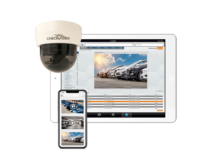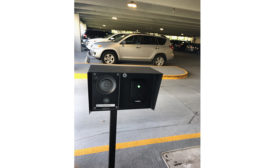ARTICLES
VIDEO SURVEILLANCE
As pandemic protocols have shifted global norms, cloud video has seen an uptick in acceptance, functionality and deployment.
Read More
Video Surveillance
Pushing AI Into the Spotlight
Pandemic requirements and mature technology make now the perfect time for integrators to get comfortable with artificial intelligence.
March 15, 2021
VIDEO STORAGE
The More Things Change With Storage, the More They Stay the Same
While current events, new technologies and evolving end user needs create challenges for security integrators, remembering the basics is the way to go
October 12, 2020
VMS Solutions Evolve to Address Emerging Needs
As the world adjusts to a new normal, security integrators and users must change the way VMS solutions are sold, installed, configured and used.
September 21, 2020
Video Intercoms Take Center Stage
Video intercoms emerge as an increasingly integral component of overall security solutions.
June 15, 2020
Video Analytics: Evolution Drives Artificial Intelligence & Vice Versa
As the two technologies merge, video and security move from reactive to proactive operations.
May 18, 2020
VIDEO SURVEILLANCE
Is AI Video Ready for Its Close-Up?
As the technology becomes more mainstream, knowing when and where it performs well can be a boost for integrators and their customers.
April 20, 2020
VIDEO SOLUTIONS
Sorting Through the Jargon of Video Storage
Understanding the common — and not-so-common — terms and acronyms in the video storage space is the first step to mastering the technology.
March 30, 2020
VIDEO SURVEILLANCE
Taking the Headaches Out of Camera Installation
A few simple tools and tricks can make a big difference in terms of time, labor and frustration when deploying surveillance solutions.
January 27, 2020
Video Management Software (VMS): It's How You Use It
Learn why video management software is ideally suited to serve as the hub of integrated systems — and how to help end users get the most out of their VMS solutions.
December 16, 2019
Get our new eMagazine delivered to your inbox every month.
Stay in the know on the latest security marketplace trends.
SUBSCRIBE TODAY!Copyright ©2024. All Rights Reserved BNP Media.
Design, CMS, Hosting & Web Development :: ePublishing









